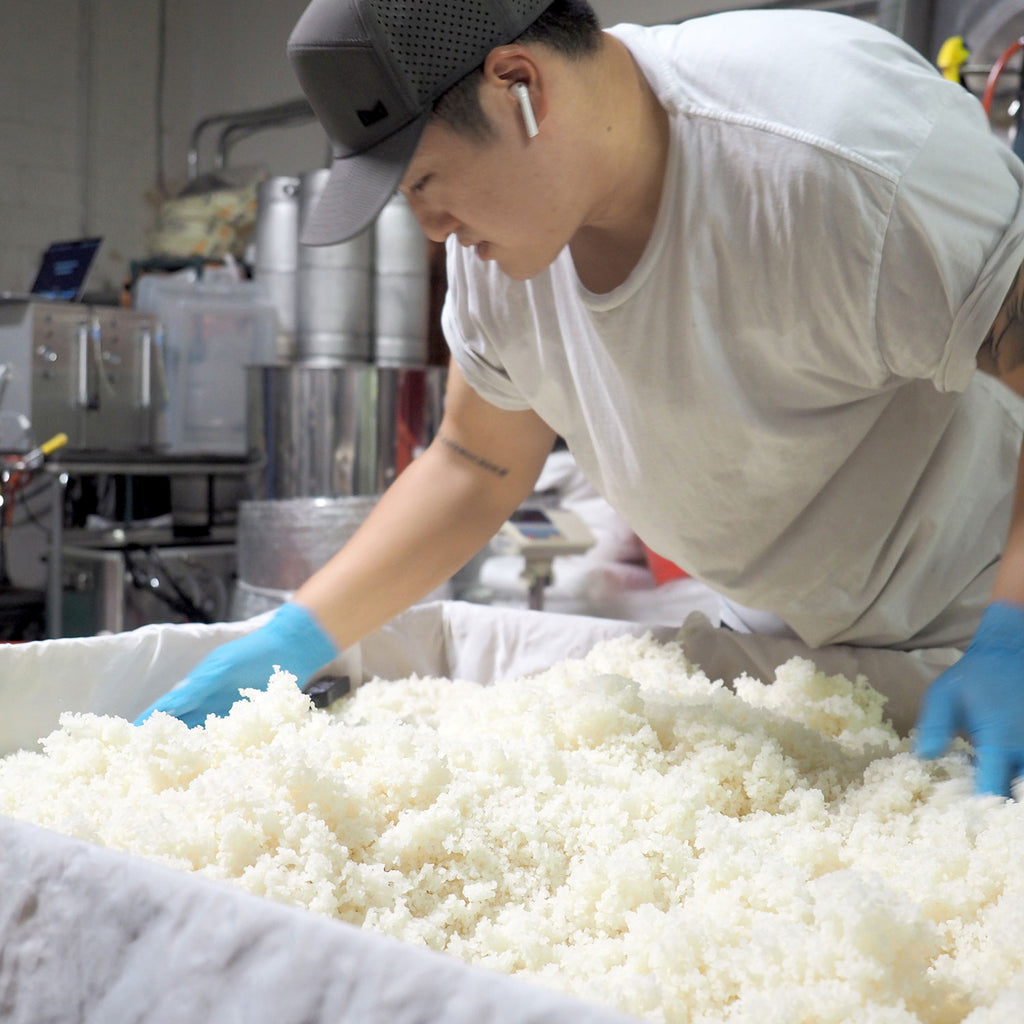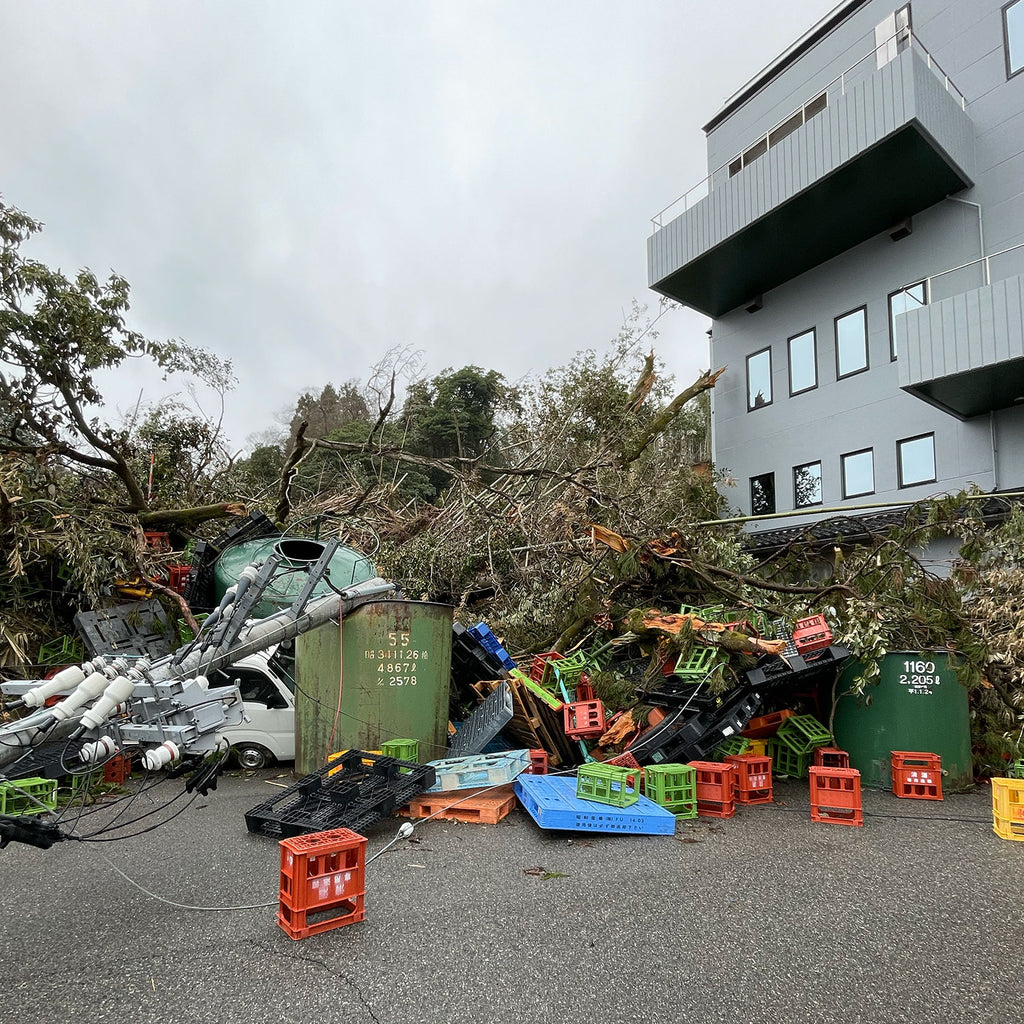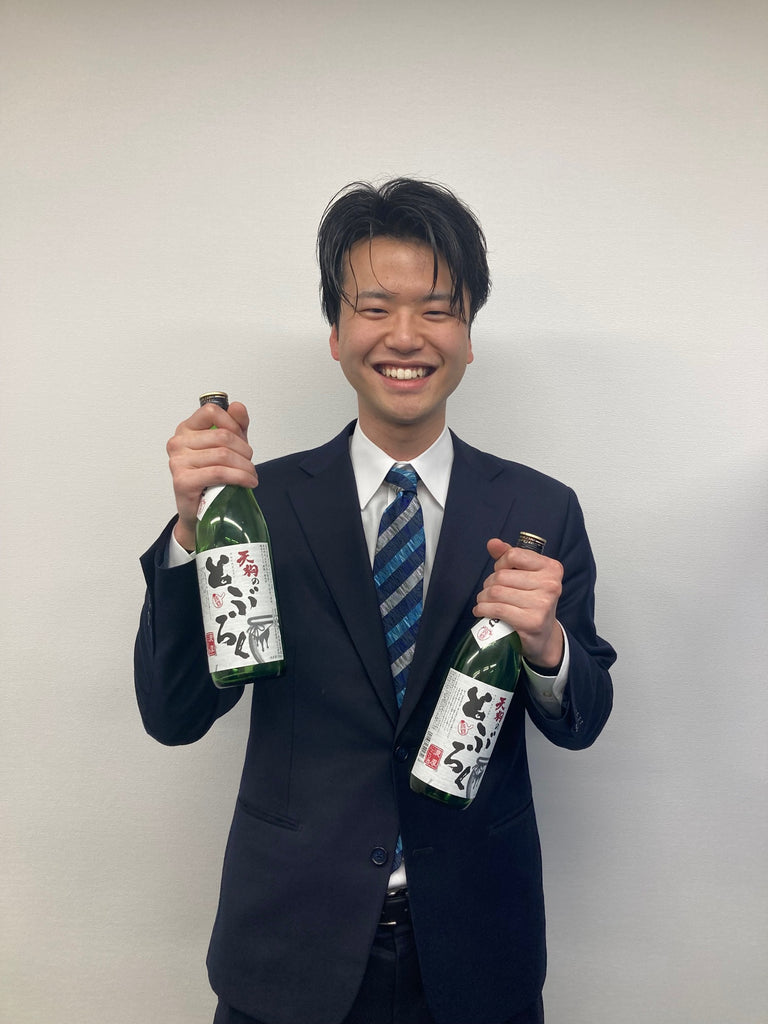
Sake Gumi is our monthly sake subscription service with 200 members throughout the country. Join today!
Doburoku is considered one of the oldest styles of sake. It is a simpler style of fermentation where there is not the usual three-step addition of rice, koji, and water (sandan jikomi) to the starter. The result is a very thick brew, thicker than nigori, and lower in alcohol than your typical sake. Ryuta Nakashima of Koyama Honke explains, “Doburoku has a long history, dating back to rice cultivation in the Yayoi period. From the Edo period to the Meiji period, doburoku was loved by Japanese people, as handcrafted doburoku was made in private homes and farms, and used to celebrate the rice harvest and for rituals at shrines. However, in 1899, home brewing was prohibited under the Liquor Tax Law, and once doburoku brewing declined, it disappeared from the public eye.” One way the government defined home brewing was to require fine-filtered pressing when making sake. Therefore, even the nigori that you see with a cloudy texture has actually been passed through a filter.
I’ve noticed a bit of a resurgence of doburoku in the past 10 years or so and wondered why. Nakashima-san demystifies this curious new trend, “More than 100 years after its abolishment in 1899, Doburoku Special Zones were created in 2002. Scattered throughout Japan, these zones are authorized to make doburoku, and farmers who primarily grow rice which is the raw material for doburoku, started making it again.” These DSZs were created to help breathe life back into local agriculture and small farms. In the U.S., doburoku does not have this complex history and James Jin, who makes doburoku in Los Angeles says, “In the U.S., any brewery can make doburoku as it legally just falls under the sake category. I am confident though to say that we’re the only brewery in the U.S. that officially released this product, and we make small batches of it so it’s the freshest doburoku you can get in California at the moment.”
Nakashima-san describes doburoku as, “a nostalgic sake that your grandparents used to make in the countryside once upon a time. It reminds you of the old days.” Because none of the ingredients are wasted in the pressing and filtration, the sake is thick and sweet. However, it may surprise you that some of these doburokus have quite a clean finish. If you prefer a more refreshing style of enjoying this sake, make a Doburoku Sour by pouring equal parts soda water and doburoku over a tall highball glass of ice. When I lived in Japan, I couldn’t get enough of these during the summer!
The sweet and sometimes tart characteristic of doburoku opens up more unusual doors for food pairing than your usual clear, refined sakes. Nakashima-san suggests trying doburoku with spicy dishes like Mapo Tofu, while Jin suggests having it with a simple bowl of fruit.
Kanpai,
Yoko (Sake Director, Co-Founder of Umami Mart)
Nova Doburoku
Nova Brewing Co. (Los Angeles, CA)
Seimaibuai: Calrose 50%, SMV: N/A, Yeast: 9, Acidity: N/A
James Jin, the head brewer of Nova Brewing, tried doburoku for the first time at Tokyo Port Brewing and it has since become a bit of an obsession. “It was a exciting style for me with a more interesting history than the common nigori style - which is one reason why we never officially released a nigori. After that, I made it my mission to research and taste as many doburoku as possible and have since tasted more than 50 doburoku to search for the perfect balance that I wanted in my own doburoku.” James packaged this brew in a 12 ounce can especially for Level 1 members! Enjoy this crushable, fizzy brew ASAP, to experience all the fresh feels including Calpico soda, pear, and Yakult. Have it ice-cold with caprese salad or a fresh bowl of fruit.

James Jin of Nova Brewing
Sogen Noto no Kuni Junmai
Sogen Shuzo (Ishikawa, Japan)
Seimaibuai: Yamada Nishiki 65%, SMV: +4, Yeast: 9, Acidity: 1.3
Sogen Shuzo was one of the breweries that got damaged during the Noto Peninsula earthquake in January 2024. We’ve raised $750 for affected breweries through sales of Ishikawa sakes in March, and we continue to support them in Gumi here. This sake is all I want from a junmai. With aromas of cooked rice, caramel, and banana, it’s a quintessentially soft and creamy sake made from Yamada Nishiki. This sake is a great example of how sakes don’t fight with food during pairing. Enjoy at room temperature with a stinky soft goat cheese and grilled black cod – both umami-forward pairings.
 Sogen Shuzo after the Jan 1, 2024 earthquake. The brewery is still struggling to have access to a reliable source of water.
Sogen Shuzo after the Jan 1, 2024 earthquake. The brewery is still struggling to have access to a reliable source of water.
Heiwa “Ichi no Daku” Doburoku
Heiwa Shuzo (Wakayama, Japan)
Seimaibuai: Nikomaru 90%, SMV: -8.5, Yeast: 7, Acidity: 1
Shibata-san, the head brewer of Heiwa, uses local Wakayama Nikomaru rice. Says Shibata-san, “Unlike most sake, doburoku is not filtered, so the fullness of the rice spreads in the mouth. By using this precious rice for sake brewing, we want to express the original experience of joy in the mouth.” Indeed, the creamy, lactic character of this rice is front and center with notes of yogurt and porridge. Shibata-san hopes that introducing doburoku will, “expand the expression and possibilities of the diversity of Japanese sake.” Drink chilled with richer saucy flavors like curry and barbequed meats and vegetables.

Toji Shibata-san of Heiwa Shuzo
Tengu no Doburoku “Mountain Warrior” Doburoku
Koyama Honke Shuzo (Saitama, Japan)
Seimaibuai: N/A, SMV: N/A, Yeast: N/A, Acidity: N/A

Ryuta Nakashima of Koyama Honke with Tengu no Toburoku bottles.
On the label is a kame (pot) in which doburoku used to be made, and the face of a tengu (a demon from Japanese folklore) who was said to jump with joy when drinking doburoku. Located in Saitama, Ryuta Nakashima of Koyama Honke tells us that the brewery has access to four wells that provide water for sake-making. Coupled with the use of domestic rice, this doburoku exhibits the sweetness and texture of soy milk, and has a slight bitter finish of sake kasu. Try making a Doburoku Sour by mixing 100ml of doburoku and 150ml of soda water over ice for a hot weather refresher. Taking a page from Nakashima-san, I paired this doburoku chilled with mapo tofu (Fuschia Dunlop’s recipe!) and it was one of the most satisfying pairings I’ve had in recent memory.




Comments (0)
There are no comments for this article. Be the first one to leave a message!